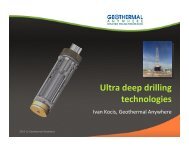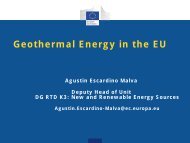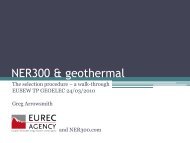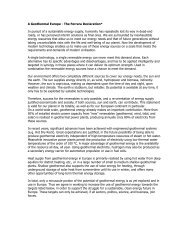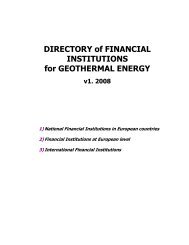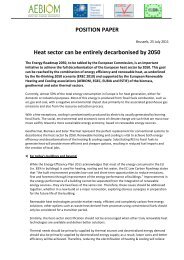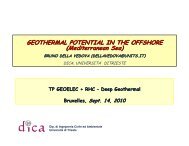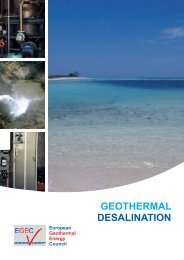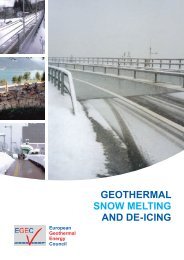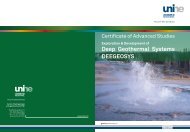Strategic Research and Innovation Agenda for Renewable ... - EGEC
Strategic Research and Innovation Agenda for Renewable ... - EGEC
Strategic Research and Innovation Agenda for Renewable ... - EGEC
You also want an ePaper? Increase the reach of your titles
YUMPU automatically turns print PDFs into web optimized ePapers that Google loves.
<strong>Renewable</strong>Heating & CoolingEuropean Technology Plat<strong>for</strong>mIn industrial applications, research is needed across all heat pump technologies toincrease their efficiency <strong>and</strong> reliability <strong>and</strong> to harness the potential <strong>for</strong> heat recoveryat different temperatures. Given that heat pumps producing heat at higher temperatures <strong>and</strong>with a greater difference between the hot <strong>and</strong> cool side of the heat pump are needed, researchpriorities should be focused accordingly.Figure 34: Heat pump technologies <strong>and</strong> their operating temperaturesFigure 34 plots the driving temperature (“source heat”) against the delivered temperature(“heat dem<strong>and</strong>”) <strong>for</strong> various heat pump technologies. Current vapour compression systemsdeliver heat at a maximum temperature of ~80°C. New vapour compression systems shoulduse low GWP synthetic refrigerants or natural refrigerants (such as butaneor water) to reach temperatures of up to 150°C. Components <strong>and</strong> materials should bedeveloped to achieve temperature lifts of up to 70 K. The use of water as the workingmedium allows the heat pump to be integrated into industrial heating processes.Alternative concepts such as heat trans<strong>for</strong>mers are interesting when a heat sourceof more than 90°C is available. Current systems use thermally-driven compression to upgradewaste heat from 100°C to 140°C. Reversible solid sorption reactions, such asthe reaction of salts <strong>and</strong> ammonia are applicable <strong>for</strong> heat trans<strong>for</strong>mation at temperaturelevels up to 250°C. Similarly, thermoacoustic systems can accept a range of driving temperatures<strong>and</strong> output heat also in a wide temperature range. A hybrid system can be createdby adding mechanical compression as driving input to a heat trans<strong>for</strong>mer, allowing <strong>for</strong> useof low temperature waste heat <strong>and</strong> still generating temperature lifts of up to 100 K.57



